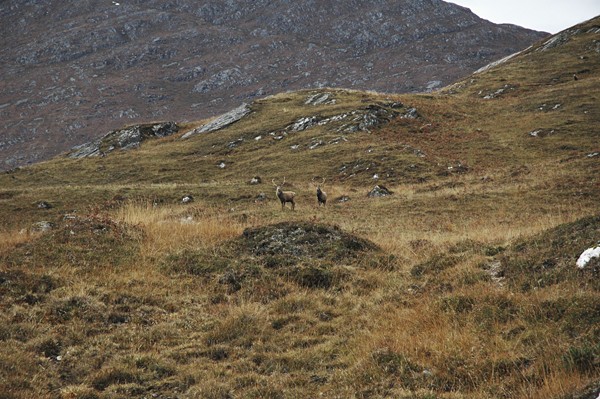Changing fortunes of Scottish red stags

Fashion can be fickle. Red deer have seen the pendulum swing both ways, but as the new stag season opens, both their image and status look to be in the ascendancy. Their significance to both our environment and rural economy is not only accepted by supporters, but also by groups not always well disposed to their cause.
Scottish red deer have enjoyed considerable expansion in terms of numbers and range over the past 40 years. But at the beginning of this century they were increasingly cast in the role of villain, the enemy of foresters, ecologists and environmentalists alike. Significant population reduction was undertaken ? some would say ruthlessly ? amid protests from keepers and conservation bodies, many of which felt that the Monarch of the Glen had been reduced to the status of vermin.
Contrast that with 2013, when the red stag is the ?poster boy? for this year?s wildlife watching campaign ? The Year of Natural Scotland ? run by the successor to the very organisation which instigated its demise! So, with its place restored as ?The Roaring Monarch? and one of ?Scotland?s Big Five?, how are stags faring and what new challenges face them?
Scottish Natural Heritage (SNH), its legal guardian, has recorded a drop in the national cull over the past few years, decreasing from 68,500 in 2004-5 to 56,000 in 2010-11. However, as not all culled beasts have to be reported to SNH, the real figure will be higher.
It appears to be accepted that the overall quality of the national herd has improved and that this stems directly from recent initiatives. Even some of the doubters concede that improvement has taken place. On the flip side, they point out that not only have some major culls brought individual upland populations under severe pressure, but because the culls have been non-selective little change in the overall age structure of the herd has been achieved.
It may come as a surprise to learn that the average age of a Scottish hill stag is around four years old. This isn?t a new phenomenon, but it?s one which would benefit from being improved upon in the future, which should be achievable if a more selective long-term regime is applied.
The winters of 2010-11 and 2011-12 will be remembered for the difficult, prolonged cold weather conditions they brought and the increased seasonal mortality suffered by deer. But the overall long-term effects are not thought likely to be signifi cant ? indeed, calving rates for the summer of 2012 were good, as were the overall counts which took place during the year. But the exceptionally wet conditions through the summer of 2012 have also had an impact on the overall health of the animals, partly through the increased incidence of liver fluke, and the increased tick burden deer carry as a result of the reduction in hill sheep stocking levels. This spring the British Deer Society in Scotland has received reports of fatalities of groups of up to 30 animals, though improved grass growth over the past month should enable survivors to recover condition.
So the overall picture as we head towards the 2013 season is positive. A big boost has come from an increased demand for venison and red deer increasingly being featured as a major element in eco-tourism and wildlife watching.
Road traffic accidents continue to be a problem, particularly in winter on certain Scottish arterial roads. Similarly, marauding deer remain a contentious matter, and those of us who are involved in management and stalking need to ensure that we keep up to date with current legislation so we remain on the right side of the law.
No doubt there will be challenges to face over the next decade. As the drive for woodland expansion and regeneration continues, the issue of how deer managers and stalkers can engage and become involved with this will remain high on the agenda. While it would be naive to think there will be no call for further population reduction, there is a realisation that this process is not simply about reducing deer numbers to help woodland but involves working towards a model that takes account of how deer fit in with expansion, so that there are advantages for fauna as well as flora.








